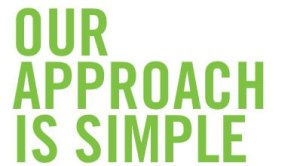Lawmakers this afternoon passed historic on-bill financing legislation to dramatically expand the state’s new energy efficiency retrofitting program, Green Jobs/Green NY. The new law will finally enable moderate-income property owners to access safe loans for retrofits, and use energy savings to repay the loan via their utility bills.
On-bill financing will open the door for NYSERDA, the state’s energy authority, to raise an estimated $5 billion in private investment in the state’s energy economy. Utility bills’ low default rates and strong collections leverage provide unprecedented security for green capital investing in building retrofits.
Green Jobs/Green NY was passed into law in 2009 with the goal of creating 60,000 job years (14,250 full time jobs), substantially reducing greenhouse gas emissions, and making one million homes and buildings more energy efficient – but it did not establish a financing mechanism to pay for the projects. On-bill financing will allow Green Jobs-Green NY to realize these goals.
The effort to pass on-bill financing was lead by Governor Andrew Cuomo, Assembly Speaker Sheldon Silver, Senate Majority Leader Dean Skelos, Assembly Energy Committee Chair Kevin Cahill and Senators George Maziarz, Kevin Parker and Mark Grisanti.
Dave Palmer, Executive Director of the Center for Working Families which designed both Green Jobs/Green NY and the on-bill financing program, said, “This is a simple and innovative solution to intertwined problems of climate change, joblessness and economic stagnation. It puts New York at the forefront of national efforts for a green economic recovery: We are the first state to implement on-bill financing on a statewide basis, and the first state to find the missing piece: ensuring that households can buy energy efficiency on the same safe terms as energy, and making deep, cost-saving energy upgrades widely available to working people. The Center for Working Families is proud to have led a bipartisan, multi-sector coalition of leaders and advocates to make Green Jobs/Green NY with on-bill financing a reality.”
On-bill financing uses future energy savings to cover the full cost of a state retrofit loan. Property owners will pay back the loan as a line item on their utility bill over time; the monthly repayment will be calibrated to the energy savings so that the loan doesn’t increase the bill. The program will give moderate income property owners access to energy-saving retrofits even if they cannot qualify for traditional bank loans.
By expanding the consumer demand for energy retrofits, on-bill financing will create tens of thousands of jobs in the green contracting sector and related industries like manufacturing and marketing. It will also increase productivity of consumer spending. Data shows that a dollar spent on construction and consumer goods produces two to three times more economic activity than a dollar spent on utility fuel.
The main elements of the on-bill financing legislation had been negotiated in early June. More recently, in the waning days of the legislative session, the Senate moved to linked power plant siting legislation to on-bill financing. The Senate’s move sparked concern from environmental justice advocates and threatened stalemate on important legislation. The Center for Working Families worked closely with all parties to ensure that the siting legislation would protect communities facing disproportionate environmental burdens. The result was two major legislative wins for New Yorkers.
Because of passage of on-bill financing, NYSERDA will be able to efficiently implement Green Jobs/Green NY. The energy authority recently awarded $6 million in outreach funds to community groups, whose success in recruiting customers and jobs depends largely on on-bill financing.
New York’s progress in implementing the Green Jobs/Green NY Act of 2009 is being closely watched by other states eager to replicate a mass-scale green jobs program.
Jackson Morris, Senior Policy Advisor at the Pace Energy and Climate Center, said, “With some of the most inefficient housing stock in the country, New York’s buildings account for over 60 percent of the state’s greenhouse gas emissions. By increasing access to energy efficiency programs, on-bill recovery will help achieve carbon reductions from homes, small businesses, and not-for-profits equivalent to removing over one million cars from the road. Enacting this innovative financing mechanism is a major breakthrough for scaling up energy efficiency in New York — policy makers across the nation should take note.”

























